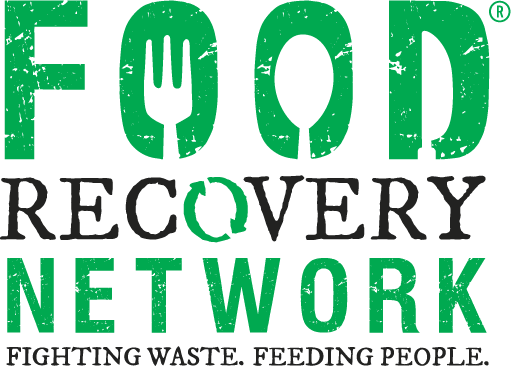Dear Friends of FRN, (FRNds),
Food Recovery Network is in the final year of our three-year Strategic Plan. The Strategic Plan was designed to support FRN’s growth from our inception on one college campus to a national leader in food recovery working in hundreds of communities across the country. The Strategic Plan acts as a guidepost for achieving a set of ambitious goals for the food recovery movement.
To understand the work our movement will embark on in Year Three of the Plan, I wanted to be sure to tell the story of what happened during Year Two. It’s important that we celebrate the improvements we’ve made to our program model, the milestones we’ve achieved as a movement, and the meaning we’ve made from the data we’ve collected. It’s also important to communicate how new opportunities shaped our work of this coming year.
Below are the five pillars of our Strategic Plan with key updates based on the ending of Year Two:
Strength and Competency of the Network
By the end of Fiscal Year 2019, FRN aims to be a vibrant hub of activity that fosters and strengthens connections among and between those in the Network. It also outlines that FRN will support students to be leaders in their communities and provide new and aggregated content, resources, and training that supports the Network in deepening its literacy in the food movement space.
FRN expanded to 235 chapters across the country seeing highest pockets of growth in Florida, Pennsylvania, New Jersey, Illinois and Virginia. To date, the movement collectively recovered and donated three million pounds of food, one car load of food at a time. By the end of Year Two, our Network donated more than 870,000 pounds of food— the most food in any one program year than ever before.
As part of our work to increase the strength and competency of the Network, we took much of year two of our Plan to design a new student portal that will launch in fall 2018. We’re particularly proud of the increased pathways of leadership opportunities at FRN. Our Regional Outreach Coordinator (ROC) program expanded to support 10 ROCs who hosted regional summits in nine cities across the country. The National Food Recovery Dialogue 2017 brought together hundreds of students from across the Network to discuss the food recovery landscape, hear from industry experts, and share best practices across chapters.
Influence and Voice
Our Strategic Plan also seeks to increase FRN’s Voice and Influence. We are already proving to be a sought-after voice in the food recovery movement, as evidenced by our presence at national conferences, requests to support government agencies, and media coverage of our work. I’ve had the opportunity to represent FRN at a number of national conferences hosted by venerable organizations like Food Tank, the Harvard Food Law and Policy Clinic, Waste360, and more. Plus, our student leaders have been quoted in the media, have won awards and have represented FRN at conferences across the country.
FRN supported Congresswoman Chellie Pingree’s Food Recovery Act and played a leading role in conversations at the USDA under both Secretary Tom Vilsack and Sonny Perdue. In addition, during Fiscal Year 2018 FRN was featured in about 900 stories that reached more than 157 million readers.
Financial Sustainability
By the end of Fiscal Year 2019, FRN will be financially stable to achieve its 3-year plan, and to weather unexpected influences of the market. We've worked to diversify our funding streams by partnering with a variety of foundations who believe in student leadership, reducing food waste, climate support and feeding those in need. We are working to communicate with our individual donors who are also amazing and diverse. We have continual supporters who give us $5 a month, even $5 a year because they believe in our work. It is humbling to have such wonderful supporters in our corner.
Staff Strength and Capacity
The fourth pillar of the Plan is Staff Strength and Capacity. FRN aims to have a team that has the resources and skill-sets to achieve the goals of FRN’s Strategic Plan and vision. In Year Two of the Plan, FRN increased the number of Fellowship opportunities at the national office and created new, permanent staff positions. Professional development is one way FRN sets ourselves apart from other organizations and we expanded our offerings of weekly trainings to all staff. We also send our staff to as many external trainings and conferences as possible.
Board Strength and Capacity
Our final pillar is to have a board membership that has the resources to govern and fundraise for FRN to achieve the Strategic Plan. We have added several members to our National Board of Directors this year who add tremendous capacity and talent to our team. We are proud of the individuals we have welcomed to our team in the past year, including Bill McConagha, a partner at Sidley Austin, LLP Food and Drug Practice, and Perteet Spencer, an organics industry marketing professional at SPINS.
Our intent in creating a three-year Strategic Plan was to build a foundation for FRN to secure our organization as we grew in scope and size. Our aim is to grow our capacity to recover more food, reduce food waste at the source, and help our environment. We are dedicated to engendering lasting behavior change by educating our community about the many negative effects of overproducing, and then wasting, food. As we enter Year Three of this Plan, I am confident that we are well on the way to achieving our ambitious goals.
Sincerely,
Regina Northouse
Check out FRN’s social media and newsletter for more updates on our work. In the coming months, we will introduce our new class of ROCs, share highlights from our FRV program, and celebrate the student leaders who comprise our movement.
